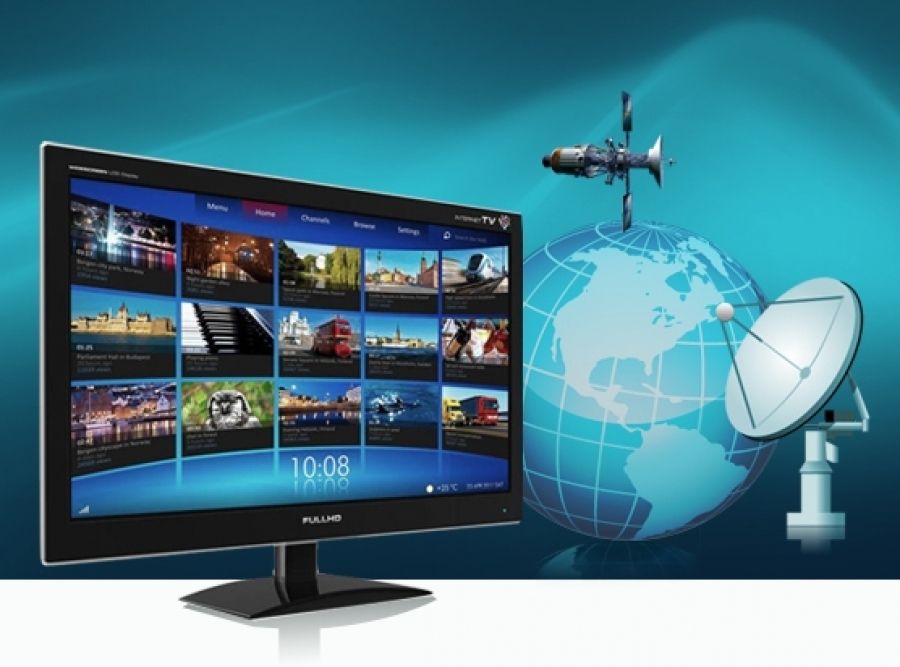
Shanti Jayasekera, PhD
Analog television.
The beginning of the birth of television and its development was a period of analog television. Countries, most advanced in technical areas, which are the USA, Japan, South Korea, Taiwan, Canada broadcast in a modern standard, NTSC 3.58, which gives 29.97 frames per second. The number of vertical lines is reduced from 576 to 480. If you bring the 29.97 frame / sec up to 30 frames / sec, it turns the other (less common) standard, which is not compatible with NTSC.
In Eastern Europe countries, in France and Russia, television broadcasts in a Sekam standard, which provides only 25 frames per second with interlaced image it is slightly smaller than the NTSC standard / Number of points in this format, 720 × 576 (horizontal and vertical respectively).
Other countries broadcast in various versions of PAL standard, which differ from Sekam by only the way of color coding.
Version of the PAL standard, once again distinguished artificially, in order for television in one country does not interfere with television of another country.
With the development of techniques a list of disadvantages of analog TV was revealed, limiting its further development.
Among the reasons, limiting the development of TV picture’s quality, a weak signal noise immunity of analog signal should be named.
The need to improve the quality of television programs led to the emergence of a fundamentally new way – a digital one. Further improvement of television picture goes in the direction of widespread introduction of digital methods of signal processing, management and control of its work.
Digital TV.
Among the most significant advantages of digital method of data transmission is a possibility of obtaining high-quality television picture through practical absence of waveform distortion, and thereby, improvement of the noise immunity. The exchange of television programs between countries with different television standards is simplified.
Having indisputable advantages over analog TV, digital TV required a completely new technical means, and this complicates the transition from analog to digital TV. Even today there is a phased, gradual replacement of analog systems to digital ones.
The first phase – a change of some blocks of analog TV-sets by digital devices improves image quality.
Introduction of digital devices at this stage has practically no effect on a functional scheme – in the input and output of a digital device is an analog signal.
At this stage, all the studio equipment is transferred to a digital signal, which processing and storage, within the telecentre is implemented by digital means.
In the output of the telecentre a television signal is converted into an analog form and is passed through normal paths of communication.
The second phase of the development of digital television – creating a hybrid analog-digital TV systems with parameters, different from those in conventional television standards. We can define two main changes in the standard television: the transition from the simultaneous transmission of the luminance and color difference signals to a serial transfer and an increase of the number of lines per frame and the picture elements in a line.
The implementation of the second direction is connected with the need to compress the spectrum of TV signals to enable their transmission through the communication paths with an acceptable frequency band.
An example of such hybrid TV systems may be a Japanese system of television of high-definition MUSE and European systems of MAC family.
In transmitting and receiving parts of these systems the signals are transmitted in an analog form.
The MUSE and HD-MAC systems have ratio of 16:9, the number of lines in the frame is 1125 × 1250, frame frequency of 30 and 25 Hz respectively.
The third stage is characterized by the creation of fully digital television stations. However, the output signal from the telecentre remains an analog one.
The fourth stage is the final one, and is characterized by the creation of fully digital receivers.
Digital TV-sets are to become devices to allow feedback from the video-information sources: information services, libraries, shopping centers. The need to improve quality has led to the need for high-definition television systems creation.
HDTV – High Definition Television – a new television standard, transmitting and reproducing the image, which quality is a little bit different or the same in comparison with from the original. A normal TV-set “gives” resolution (i. e., the density of points) of 720-480, or 345 600 pixels.
In the HDTV format a resolution of 1920 × 1080, i. e. more than 2 million pixels, is achieved. Naturally, the higher density of points is reached, the better is the image quality.
An interlaced frame enhances the effect of image clarity, when frames are like partially overlapped on each other.
Currently, some channels of satellite TV broadcast images in HD format. And is close the time, when most of the channels will be broadcast in HD format.
There are two types of HD TV receivers. They are HDTV Upgradeable and HDTV Built-in.
An Upgradeable TV model allows you to watch programs in HD format only through the HDTV receiver with compulsory connection to company service – a supplier of television programs.
A Built-in TV HD model with the receiver already has a built-in receiver that allows you to take through an ordinary indoor antenna programs, broadcasted currently on usual free channels. In HD format these channels broadcast not all programs, but only some of them.
All HD TVs have a PiP (Picture-in-Picture) – a device that allows you to view simultaneously two or more channels.
Therefore, buying an HDTV TV-set with Built-in receiver and having a “dish” with an HDTV receiver, you can watch in HD format both satellite TV programs and programs of VHF (free) channels.
The so-called plasma TVs are currently available. Unlike traditional TV-sets, they have a thickness of a picture and can be hung on a wall. These TVs are a little bit more expensive than kinescoped and searchlight TV-sets, but in HDTV format we receive high-quality images on a plasma TV.
Having already an HD TV and purchasing a DVD-player one should be aware that this DVD-player should be able to play in the Progressive scan format, which provides to get a resolution of 1280 × 1080 = 1.382400 pixels, which is high and close to HD.
Such disks are called HDCD.
One DVD holds 2-4 hours of video stream in an Mpeg 2 format with a frame size of 720 × 576 for PAL and 720 × 480 for NTSC and a 6-channel audio with quality kbit / s per channel (not enough). The format of HD provides the rate of video stream of Mpeg 2 at a rate Mbit / s, which is 3 times larger than that of DVD. Such a large carrier of information does not exist yet. But the emergence of a new laser Blue-Ray discs, will hold 24 GB. HD video recorders began to appear. But failing videotapes with HD format recordings such video recorders can only be used to record HD programs.
All this allows to assert that the future is for HDTV television.
3D TV.
Digital TV of HD format allows not only to improve quality, but also add a third dimension of the image, and to the abbreviation TV an acronym 3D.
The introduction of a new broadcasting format is a big infrastructure project, to be solved at the state level.
The sequence of the process of TV broadcast: stereoscopic photography→video compression→broadcast→reception and decoration→3D display. The last step – 3D display. The term “3D” is used to indicate the full range of volumetric display technologies. Video material, containing two channels (one for left and another one for right eye) is also called stereoscopic. To view this video a viewer must wear special glasses.
Multi-level 3D video contains more channels. Eight-nine of these channels allow using show technologies, not requiring the usage of glasses for viewing.
Multi-level video allows examining can objects from different angles. At present, a wide usage got 3D TVs and displays, using 3D glasses for viewing 3D videos.
These glasses can be of 2 types: sunglasses of a curtain type and sunglasses of passive polarization.
Sunglasses of a curtain type change the transparency of its glasses synchronously with the displaying frames on the screen, destined for the left and right eye.
Such glasses are also called glasses with active polarization.
Passive polarization glasses. At the same time frames are shown to the right and left eye in interlaced format on the screen.
The advantage of passive polarization in complete absence of flicker and eye strain.
3D Channels broadcast. At present, three ways of 3D broadcast channels are spread. The first way – to send two channels of video with decrease of horizontal resolution.
The second way – broadcasting channels for left and right eye by individual channels.
The third way – an increase of frame rate.
In this case in the flow instead of 25 frames per second are transmitted 50 frames. 25 Frames to left and 25 frames to right eye are alternating in the video stream.
In the first and the second case the video stream can be watched on a regular TV.
In the third case, the video broadcast can not be watched on a regular TV.
Despite the wide dissemination of 3D TV-sets with glasses with this way of show has a significant drawback – the need to wear glasses. It’s hard for people, using glasses for vision correction.
However, there are 3D displays that allow displaying video without glasses.
The greatest development got a technology that uses an optical lens raster to create a 3D effect.
The usual image is with usage of lens raster, the original video must contain several channels, taken from the horizontal displacement (typically 8-9 pc.). Such a set of video streams allows to create in front of a screen a large number of zones of stereo vision, where the viewer can see a volume image without glasses, and even to look behind the foreground object.
None of the existing methods of 3D display is without drawbacks. Used in the broadcast 3D format, where the frames for the left and right eye are mounted in one video frame of 1920 × 1080 (side-by-side) involves reducing the width of each frame twice. This leads to a decrease of image quality. This drawback can be eliminated by using a higher-resolution display.
Internet TV (or online-TV) system, based on two-way digital transmission of a television signal via the Internet connection through a broadband connection.
At present, the Internet TV gets huge scales.
This is a wide range of application possibilities of television continent, which until recently were almost unenforceable on traditional television.
The Internet television system allows to control the subscription package of each user, to broadcast channels in MPEG-2 and MPEG-4, protection of TV content at any level, the search for past TV programs and pause function for a television channel in real time. The high interest to online television is explained by a number of reasons: it is user’s convenience, the minimum of advertising and a program you need can be downloaded immediately after viewing.
IP-TV is considered to be digital technology of multi-program broadcasting in IP- network with a packet video data transmission in IP-protocol (Internet Protokol).
The prefix =IP= appeared in radio broadcasting, telephony, and now in television.
Despite the fact that both IPTV, and Internet TV provides video, based on IP, there are some differences among them. For example, Internet TV is distributed over the Internet, thus ensuring free access to the content, while the IPTV service is delivered through closed networks, in which an access to content is allowed to subscribers of a service.
The key difference is that Internet TV offers an access to content from any location of connection to the Internet, and IPTV operator restricts by the limits of operator’s medium, which a set of unique features and high quality content are contained. An IPTV technology allows you to watch TV programs and at a convenient time for the viewer.
The basic service is a multi-program retransmission of television channels, providing the subscriber a defined set of channels, which he pays a monthly fee for.
The list of additional services, available to the subscriber of IPTV service, will directly depend on the selected by the subscriber TV package.
Smart TV – is a new trend in integration of the Internet in modern TVs and digital TV receivers as well as in technological symbiosis between computers and TVs.
Smart TV – a TV-set with a built-in Internet access or a TV receiver, which multiplies the capabilities of a modern TV-set.
Smart TV is a computer system, integrated into the TV-set, and also allows installation of additional offers and services.
The concept of Smart TV is at early stage, but is constantly supplemented with software such as Google TV.
Except a full Internet access, Smart TV TV-sets make connection between household electronics and “smart devices” closer. So Smart TV can be connected to not only home computers, but also smart phones, tablet PC, cameras and other devices with support of industry specification.
According to the latest forecast of analytical company Display Search, the number of television sets, equipped with an access to the Internet by 2015 will reach 500 million – about 47%.
Further development of the television is directly related to the improvement of technological breakthroughs in digital television.
This increase in the transmitted video stream over long distances, perfection of services and improvement of picture quality of TV-sets with computer functions.
Reference:
- R. Brice, Handbook of digital television.
- A. Smirnov, Fundamentals of Digital Television, 2001.
- Television (edited by Jakoniya).
- V. V. Egorov, Television, “Aspect-press”, 2006.

